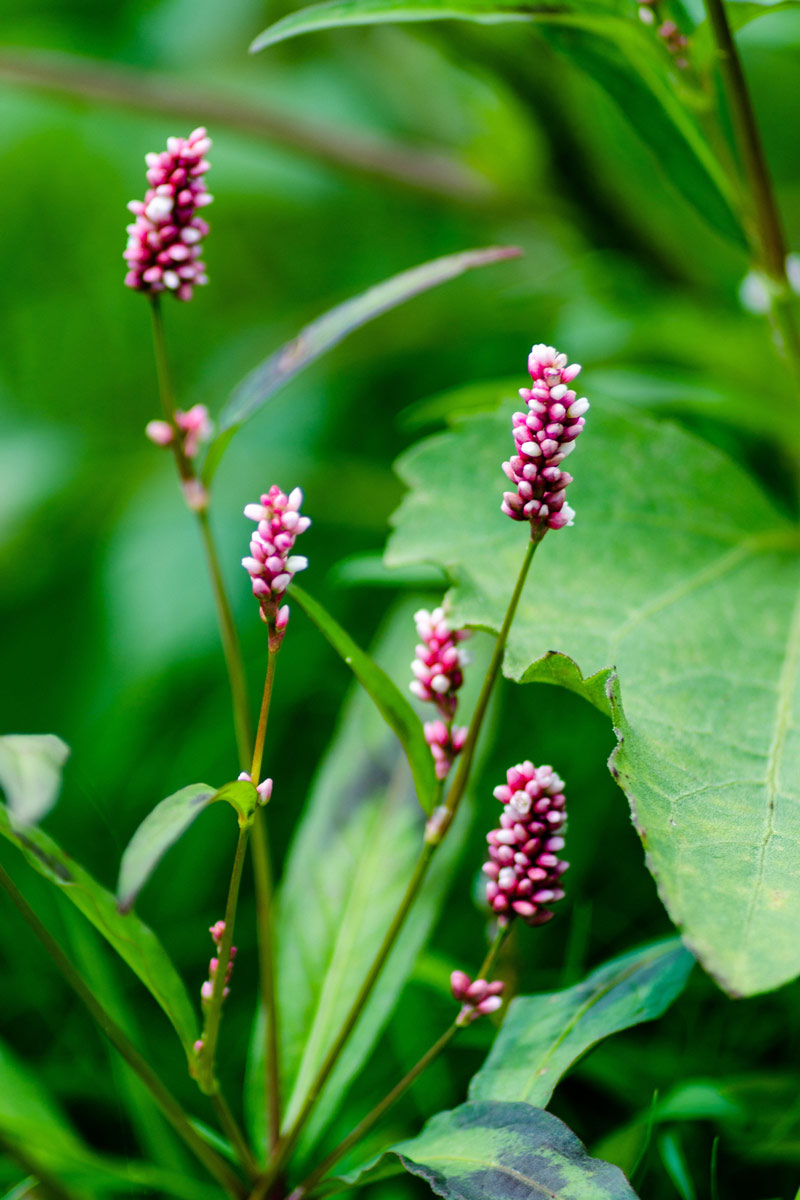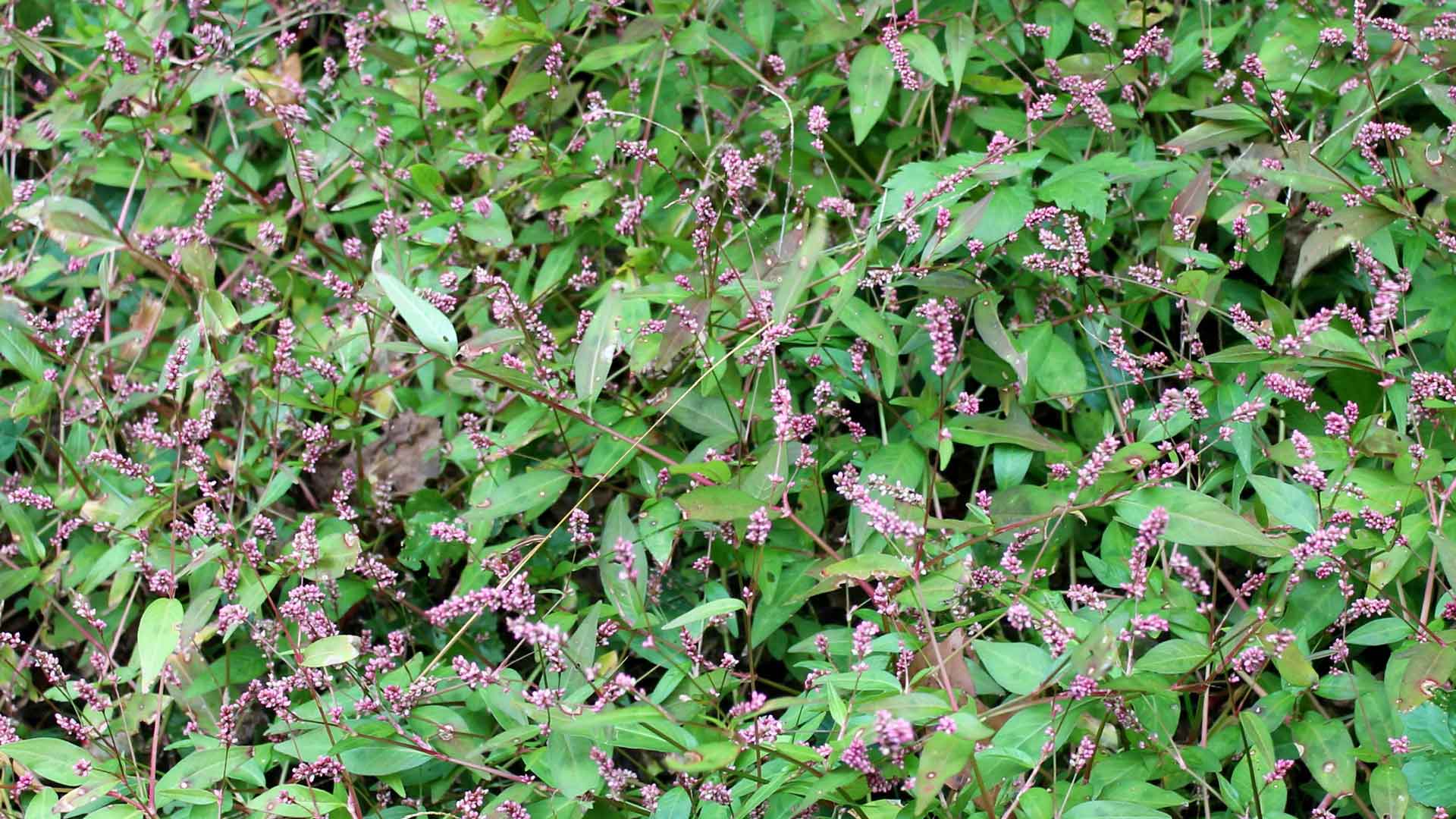Weed or Wildflower? Summer Weeds that Look Like Native Plants
Killing native wildflowers by mistaking them for weeds can be detrimental to the ecosystem. Here are six common summer weeds and how to tell them apart from similar native plants.
Not all “weeds” are plants that invade aggressively from beyond our borders. A case in point is Pennsylvania smartweed, a summer annual weed that's a member of the buckwheat family and native to most of the United States.
Although pollinator insects collect its nectar and birds eat its seed, this spiky-pink summer bloomer spreads so readily and is so adaptable to different soils that it’s now considered more weed than native wildflower.
Pennsylvania smartweed is one of the most common summer weeds in garden beds throughout the United States, as well as Canada and parts of Europe and South America.
It’s especially fond of damp areas, such as along stream banks, marshes, swamps, and other wetlands.
However, Pennsylvania smartweed is versatile enough that it can be found in most any sunny to partly shaded disturbed-soil site as well, including flower beds, vegetable gardens, farm fields, meadows, and even parking-lot beds.
It’s usually not a common lawn weed, though. Turfgrass, especially thick turfgrass, fends off the germination of Pennsylvania smartweed seeds. Plus, smartweed doesn’t do well under repeated mowing.

Pennsylvania smartweed (Persicaria pensylvanica). Wirestock / iStock / Getty Images Plus
Pennsylvania smartweed (Persicaria pensylvanica, formerly Polygonum pensylvanicum) is a wiry, multi-branched plant that has small lance-shaped green leaves that come to a point. The leaves are arranged alternately up the red-tinted stems, have smooth edges, and may have a black or purple mark in the center.
The most defining trait is the plant’s flowers, which usually begin appearing in July and continue into early fall. The flowers are inch-long spikes of light pink that form at the top of the wiry flower stems.
Pennsylvania smartweed plants typically grow about 18 inches tall, although left untouched in rich, moist soil, heights can reach three or even four feet.
Smartweed seeds sprout into young plants in late spring to early summer. The summer flowers ultimately produce small black seeds that drop to overwinter in the soil and produce a new crop the following spring.Each season’s plants die in fall.
Birds also help distribute Pennsylvania smartweed. At least 50 species of birds from geese to sparrows (plus several mammals) feed on smartweed seeds, but since they don’t digest all of the seeds, their droppings spread seeds to new locations.
Each smartweed plant is capable of producing 20,000 or more seeds per year. About half of that seed is still viable in the soil four years later.
Seeds germinate best in damp soil, so smartweed is often less of a problem in dry climates or drought conditions.

Pennsylvania smartweed has taken over this garden area. George Weigel
Because of smartweed’s ample seeding ability, step one in controlling an outbreak is removing plants before the flowers have a chance to set seed and fuel ongoing outbreaks.
Plants are fairly easy to pull, hoe, or dig out since they’re new plants each season. Just try to remove all of the underground rhizomes and rooting points to head off regrowth.
Smartweed is also susceptible to several readily available weed-killers, so spraying is another option. Check product labels for usage directions and to make sure Pennsylvania smartweed is listed.
In sidewalk cracks, paver patios, and other non-flammable surfaces, flame weeders can be used to kill smartweeds with heat.
While preventing ongoing seed deposits will help, dormant smartweed seeds can continue to sprout for years, especially in garden beds that are tilled or disturbed. Here are some strategies to control Pennsylvania smartweed by preventing germination of new weeds.
Not disturbing the soil is one Pennsylvania smartweed control strategy since smartweed seeds sprout best in the top inch of soil.
Another strategy is denying sunlight to the buried seed by covering bare soil with two or three inches of mulch. A dense planting of groundcover or desired plants also keeps smartweed from gaining a foothold.
A third strategy is using a granular weed preventer to keep new smartweed plants from germinating.
In landscape beds, Preen Extended Control Weed Preventer is labeled for the control of Pennsylvania smartweed. Two applications per year – once in spring and once six months later in fall – give season-long control of smartweed and more than 100 other common weeds, including dandelions, chickweed, pigweed, and crabgrass.
The product can be applied around hundreds of existing landscape plants. (The label lists plant-by-plant specifics.)
Preen Mulch with Extended Control Weed Preventer is a two-action bagged product that combines wood mulch with a smartweed preventer.
Apply Preen in early spring, before smartweed seeds germinate.